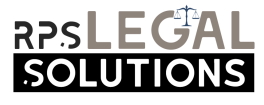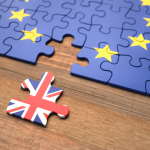What Is a Patent Litigation?
Patent litigation occurs when an individual or organization commits an illegal act with respect to another person’s patented invention. A license is necessary to do so. The patent holder must grant permission before the activity can occur. This permission can be in the form of a license, a licensing agreement, or some other method. Infringing on another’s patent may be punishable by a lawsuit. In addition to the legal consequences, patent lawyer los angeles ca can be expensive.
Expert discovery in patent litigation
When is it appropriate to use an expert witness in patent litigation? It’s important to consider the different rules on the admissibility of expert testimony and whether relying on underlying information will be permitted. In patent litigation, Rule 703 is particularly important, since it controls the use of expert testimony. In some cases, an expert witness may provide opinions without providing the facts that support those opinions. In other situations, an expert must explain the facts to the jury.
If an accused user is unable to use the invention correctly, the jury can find that it was not created by the defendant. Patent litigation experts are highly qualified to speak on these matters. The evidence they present can help a jury understand a complex patent issue. Experts may also be called on to testify in litigation to demonstrate that a product does not violate another party’s rights. Whether an expert is needed for a patent case depends on the complexity of the issues involved.
Calculating damages for patent infringement
There are several approaches to calculating damages in patent infringement litigation. Patent owners generally rely on a large base or high rate for their damages. However, these numbers must be backed by sound economic analysis. The following section will summarize some of the most common approaches to damage. In the first, patent owners calculate lost profits by determining how many copies of a patented product are sold by the infringer. This figure may include the value of sales outside the United States.
Damages in patent infringement litigation are usually calculated by multiplying a reasonable royalty rate by the number of sales made by the infringer. Often, the court will also look at the infringer’s projected profits at the time of the infringing actions and potential costs and expenses that will reduce that profitability. In addition to profits, the court also considers the demand for the infringing product and the lack of an acceptable alternative.
Defending a patent against induced infringement
In recent years, the Supreme Court has weighed in on the issue of induced infringement and the defense of good faith belief. It has been made clear that evidence of a good-faith belief in the patent’s invalidity does not negate an inducement claim. However, this ruling also leaves open the question of when good faith belief is an appropriate defense. The court’s decision in the Commil case may have swayed this question.
An inducement claim requires proof that the infringing party actively induced the infringing act. In general, such proof requires that the alleged inducer had knowledge of the patent and induced the infringement. The patent owner also needs to show that the defendant was aware of the patent and that its induced acts violated the patent. In some instances, the proof of specific intent may include the drug’s label instructions.
Examples of patent infringement lawsuits
While patent holders have lost about 75 percent of their lawsuits against alleged infringers, they do have a number of options available. One of those options is positioning themselves to defend themselves better against future suits. In other words, companies that know how to defend themselves are less attractive targets for patent infringement suits. Here are some examples of patent infringement lawsuits. These examples will help you decide which strategy is best for your company.
In Schillinger v. the United States, Nintendo was forced to pay a large sum to Tomita Technologies International, Inc. over the use of its 3DS technology. In the case of Microsoft and Motorola, both companies dueled for five years over patent issues, including the Xbox gaming system and smartphones. In “The Help” and “The Da Vinci Code” cases, the writer of the books was sued for allegedly copying a patented book without permission. In “KSR v. Teleflex,” the court ruled that patents covering obvious products were invalidated. In Alice Corporation v. CLS Bank International, a plaintiff’s attorney claimed that the book contained lines from the book that had been copied verbatim.






